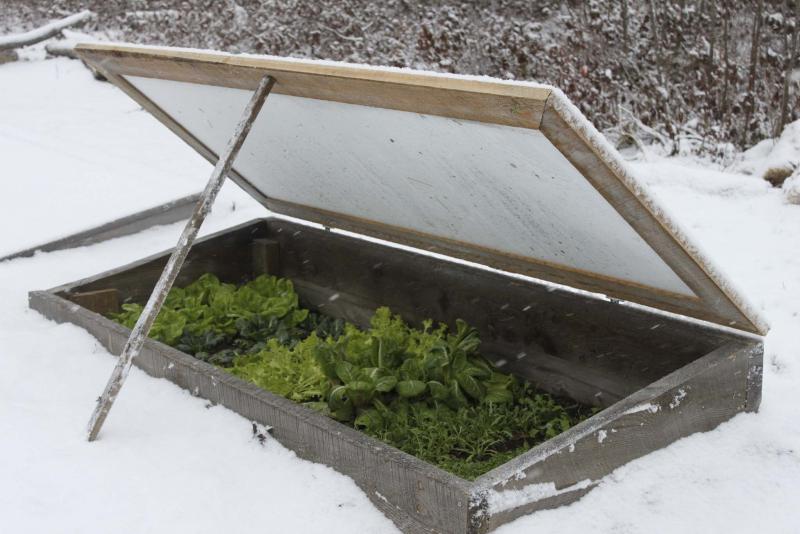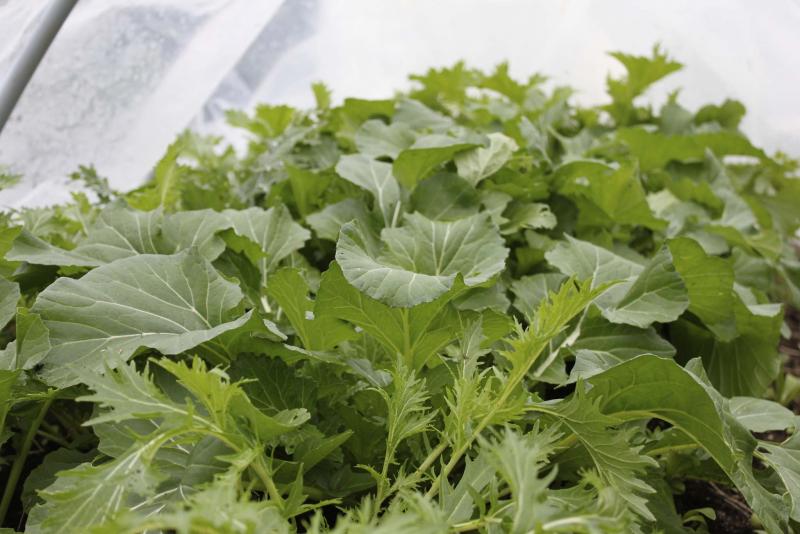
Niki Jabbour
Plan to sow some seeds in August and September. With a mini hoop tunnel, you can keep on harvesting Mizuna and other tasty mustard greens even after a few frosts.
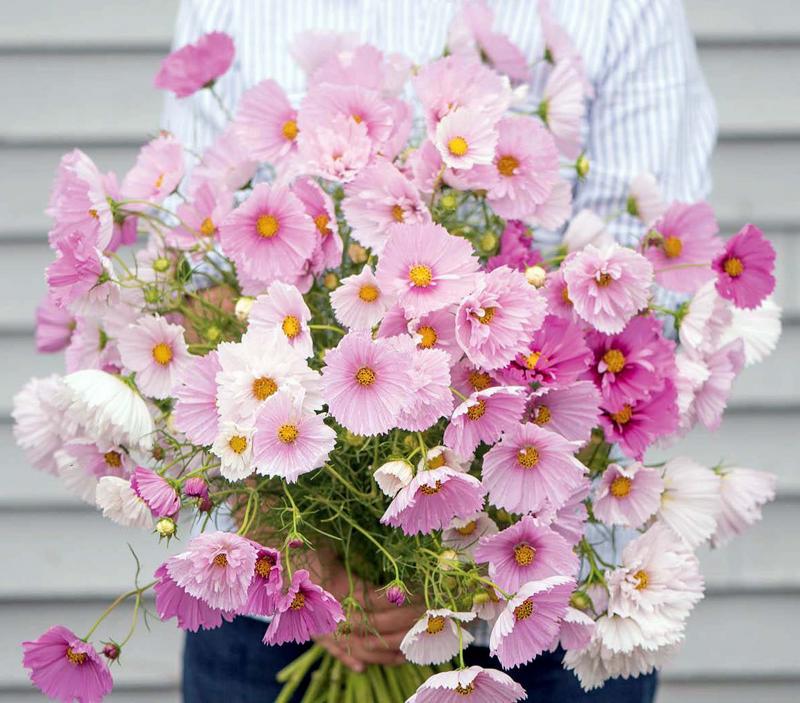
Johnny's Selected Seeds
Want to keep the bad bugs away from your veggie crops? Attract pollinators and beneficial insects with lots of flowers such as this pretty pink Cosmos Cupcakes Mix.
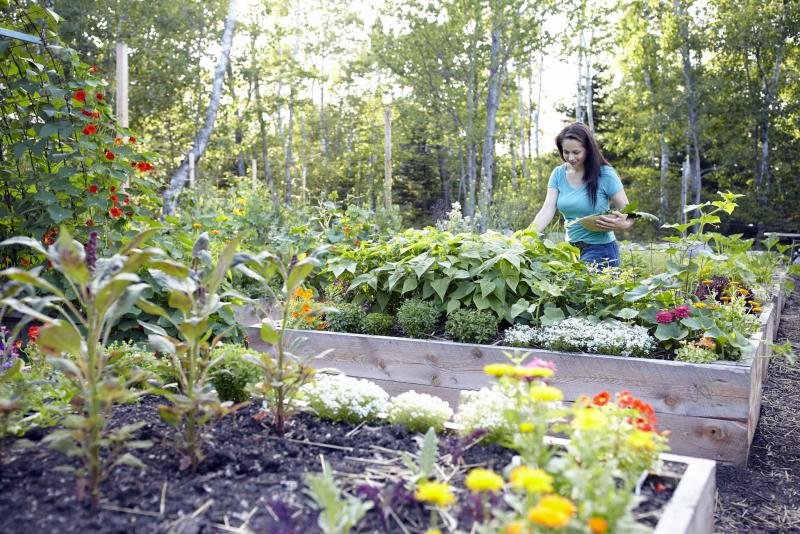
Niki Jabbour
Author Niki Jabbour, a year-round vegetable gardener, plants a succession of crops in her raised bed garden in Halifax.
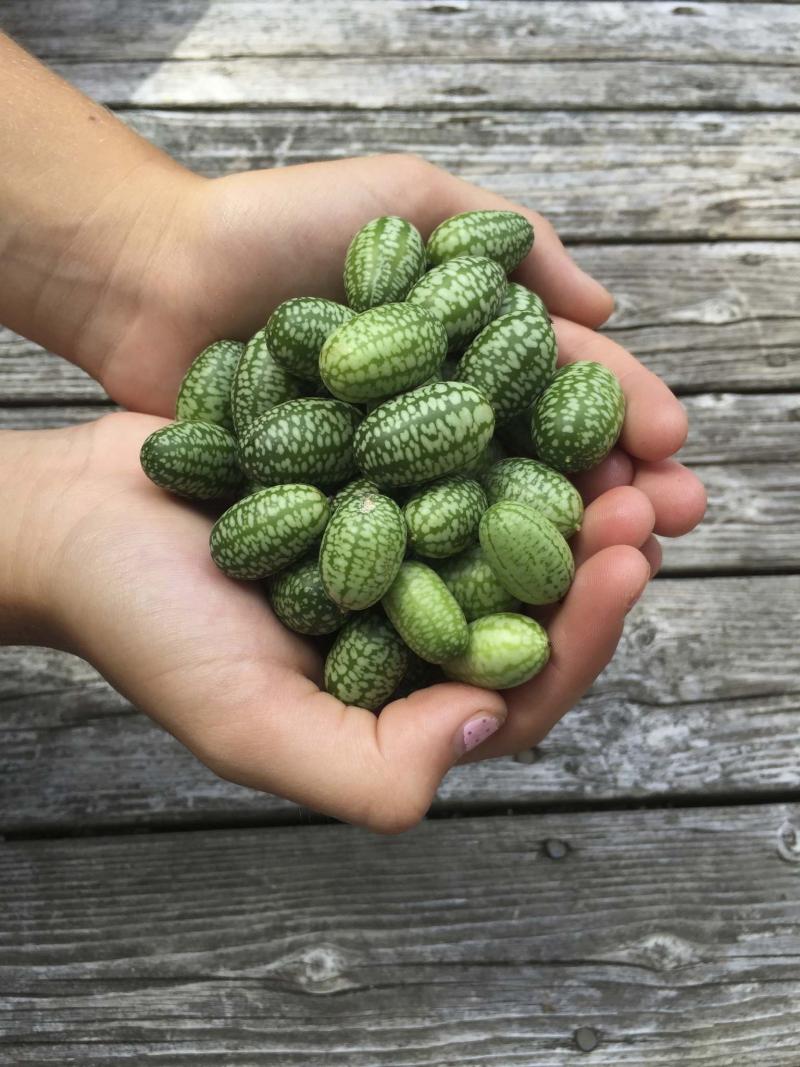
Niki Jabbour
No bigger than a grape, cucamelons are all the rage. Add them to salsa, salads and hummus. Try pickling them, too.
Vigorous and flavourful plants are yielding in Manitoba gardens. You’ve waited for the fresh, crisp taste of homegrown veggies but is the clock already ticking on the remaining days in the growing season?
Hardly, says Niki Jabbour, award-winning author of The Year-Round Vegetable Gardener: How to Grow Your Own Food 365 Days A Year No Matter Where You Live (Storey Publishing, 2011). With succession planning, you can extend the growing season and harvest fresh, organic vegetables well into fall and early winter and even beyond.
Jabbour makes her home in Halifax. She is the host and creator of The Weekend Gardener radio show and a prolific foodie who is online at SavvyGardening.com. Jabbour is also the author of Groundbreaking Food Gardens: 73 Plans That Will Change the Way You Grow Your Garden (Storey Publishing, 2014).
While her backyard garden enjoys a milder, zone 5b climate, Jabbour, like most Canadian gardeners, can look forward to the prospect of snow and plummeting temperatures.
As Jabbour finishes harvesting her early crops — spring greens, radishes and peas — she removes them from her garden beds. Loosening the soil, she adds a fresh layer of compost and then plants warm season crops for summer harvesting, such as bush beans. Once those are done, she begins planting anew, usually around the last week in July in preparation for fall and winter harvest.
Most of us think the arrival of September means the end of the homegrown harvest, said Jabbour in a recent phone interview. By planting cold-tolerant vegetables in mid-summer and utilizing season extension techniques, however, she says that productivity in the garden is greatly increased. One of Jabbour’s favourite crops for cool-season growing is a variety called Napoli. Frost triggers the starches in Napoli to convert into sugars for an exceptionally sweet taste.
Other favourites for cool season growing include scallions, spinach, Swiss chard and arugula. Jabbour also grows mâche (also known as corn salad or lamb’s lettuce) for adding to her winter salads. She plants the seeds in mid-fall into raised beds. As colder temperatures arrive, usually early October, she adds the protective cover of a cold frame or mini hoop tunnel. Growing under cover easily extends the growing season by weeks and months.
Even lettuce varieties that are not as cold tolerant as other greens will thrive when the seed is sowed in a cold frame in early September. Red Salad Bowl, an oak leaf lettuce, is a very cold tolerant variety, says Jabbour, who adds that it is also an ideal summer lettuce because it is slow to bolt. Winter Density, a compact bibb-romaine lettuce and Arctic King, a butterhead type, are two of the cold-hardiest varieties. Jabbour recommends direct-sowing or transplanting to a cold frame or mini hoop tunnel about four to six weeks before the first fall frost.
Asian greens such as mustard-flavoured Tatsoi and Mizuna are also cold-weather salad greens. Jabbour picks the baby leaves as soon as they are ready and adds them to sushi and other Asian-themed recipes. Jabbour begins sowing Tatsoi seed beginning in mid-August.
In her book, The Year-Round Vegetable Gardener, Jabbour recommends situating season-extending devices in a location in the garden where it will be exposed to the most sunlight. Cool air temperatures and decreased light intensity that begin in late fall slow the growth of winter vegetables.
The solar energy that is captured by a cold frame or mini hoop tunnel provides the warmer micro-climate that is essential to allowing tender edibles to be harvested in late fall and early winter after frosts. At nighttime, the radiant warmth released by the soil also raises the interior temperatures.
In our zone 3 climate, Jabbour recommends the addition of straw mulch when growing salad crops under cover once outdoor temperatures begin to drop. Jabbour also suggests an interior layer of floating row cover for added insulation beneath the outer polyethylene plastic cover.
Jabbour has several cold frames that she locates at the sides of her garden beds. If you don’t have a cold frame, she says, you can still grow vegetables such as carrots, parsnips or beets for harvesting in late fall or early winter by mulching them with a layer of straw or leaves that acts as an insulating blanket that protects them from freezing.
Raised beds are key to Jabbour’s success in growing food year-round. Two years ago, she decided to renovate her roomy, 185-square-metre veggie garden. Levelling the slight, south-facing slope, she built 20 wooden raised beds and arranged them in a symmetrical pattern. The smaller beds measure 120 centimetres by 243 cm and the larger beds measure 120 cm by 304 cm. Each bed is 40 cm deep. Jabbour sings the praises of raised beds, touting their excellent drainage but especially their ability to facilitate early planting in the spring when the soil in in-ground gardens remains cold. The soil in raised beds also stays warmer into fall.
Putting hoops in your raised beds can stretch the season in fall and allow for an early start in spring. In summer, Jabbour says that hoops can be covered with insect barriers to prevent pests from reaching your crops.
In the battle against pests, says Jabbour, flowers are perfect planting partners for veggies in the summer garden. She plants several different varieties of flowers each year so as to draw in the widest diversity of pollinators and beneficial insects. Jabbour prefers the old-fashioned sunflower varieties to the varieties with fully double flowers, which are pollenless and mainly grown for their value as cut flowers. She likes to plant a row of sweet alyssum around her tomatoes because the nectar of alyssum attracts parasitic wasps that prey on insect pests in the garden.
A favourite flower variety this summer that Jabbour grew from seed is Cupcakes Mix Cosmos with pale pink pleated blooms. Since she began mixing flowers with her veggies seven or eight years ago, Jabbour has fewer pests to contend with and says that picking and squishing provides adequate control.
Jabbour says that the number one edible in her garden this summer is cucamelon, a grape-sized fruit also known as Mexican Sour Gherkin. She grows 10 to 12 cucamelon vines every year, which produce literally hundreds of cucamelons. Jabbour says cucamelons are great for eating fresh. She chops them into salsas and uses them in stir-fries and salads or for dipping in hummus or baba ghanoush. She also pickles cucamelon.
Jabbour recommends proper harvesting of whatever edibles you are growing. It’s easy enough to snap off a zucchini, she says, but do try to harvest properly by making a clean cut with a sharp knife. As well, stay on top of picking your tomatoes. Harvest ripe tomatoes prior to a heavy rainfall so as to preserve their quality and prevent them from cracking.
Decide what you would like to plant in August and September. Maximizing your yield with succession planning will carry you right into the fall and beyond. Don’t be afraid to experiment, says Jabbour, because that’s the most fun of all — playing in the vegetable garden.
colleenizacharias@gmail.com

